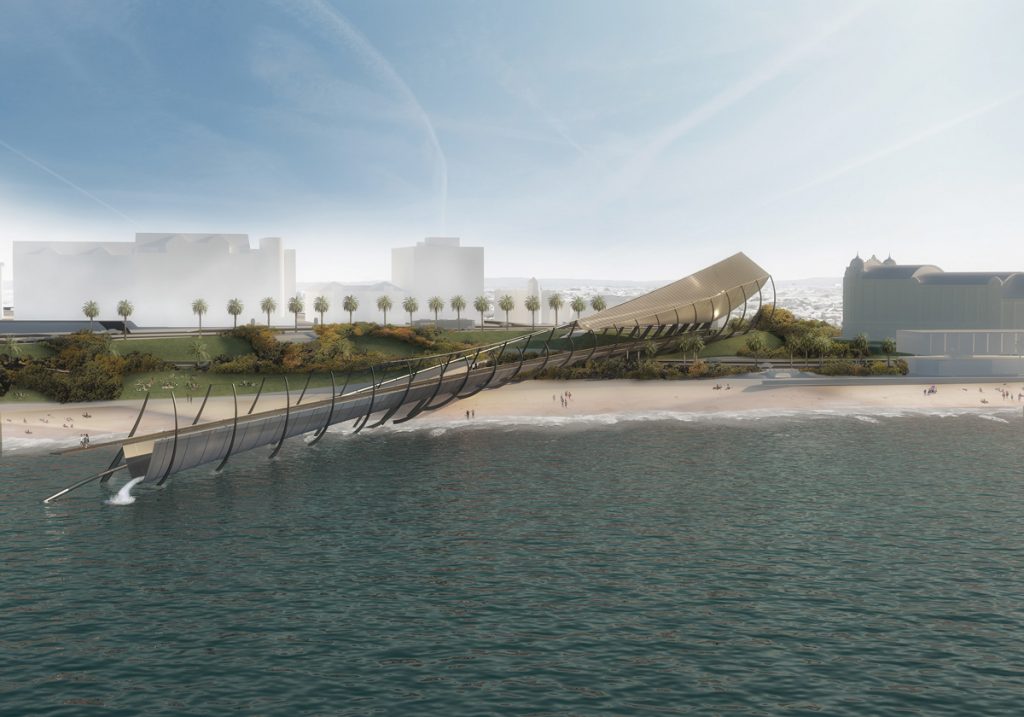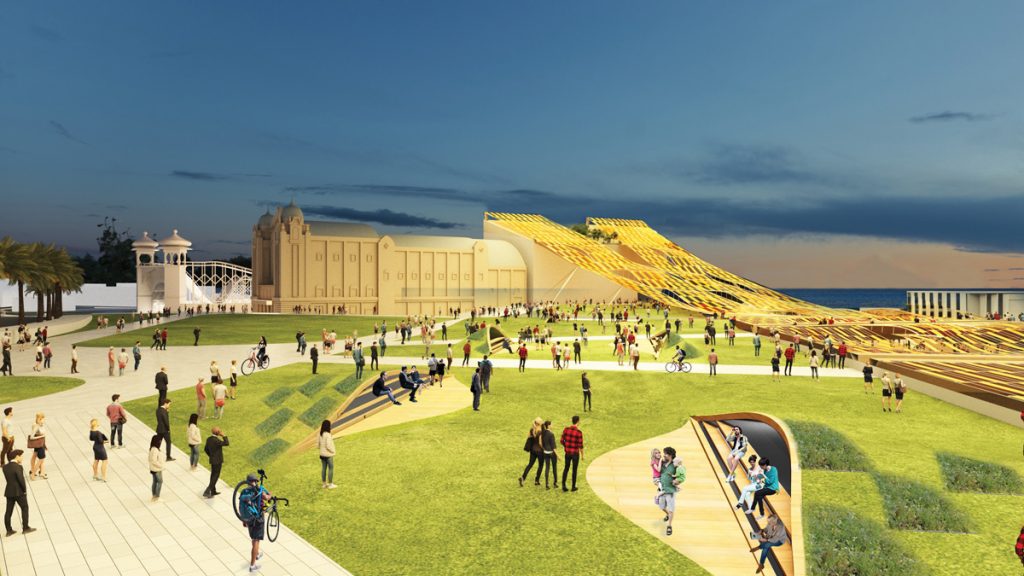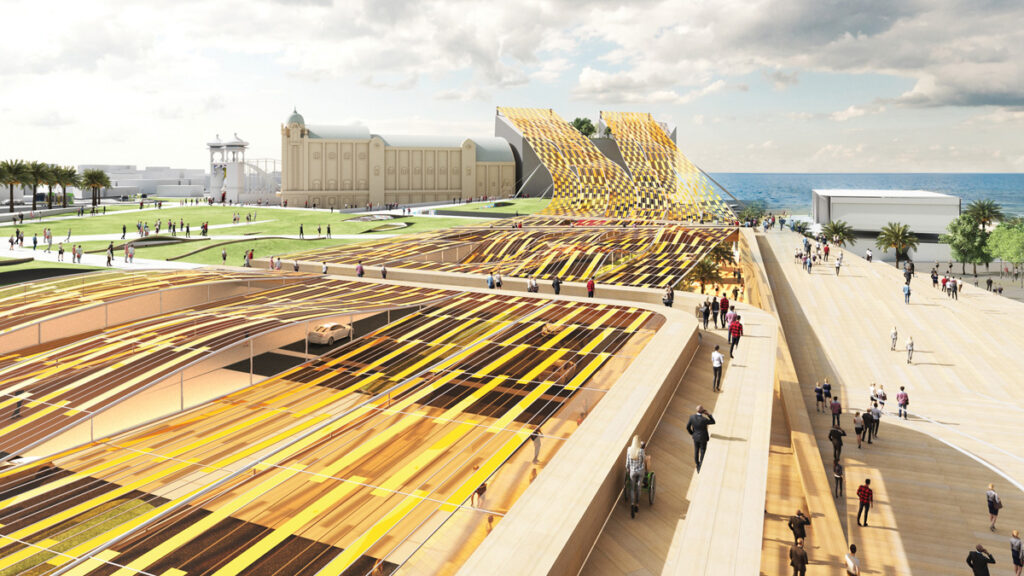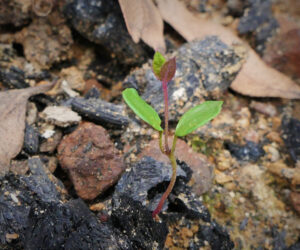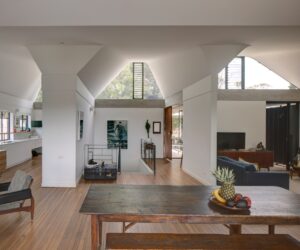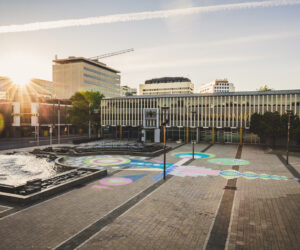Winner of 2018 Land Art Generator design competition announced
Today the Land Art Generator awarded a local Melbourne team first prize in their fifth biennial design competition. Sponsored by the State of Victoria as part of their Renewable Energy Action Plan, the competition calls for large-scale works of public art that also produce clean energy. The Land Art Generator Initiative (LAGI) combines community-scale renewable energy infrastructure with public art and creative placemaking for the design of important public places.
LAGI competitions, which are held in cities around the world, present a positive vision of a sustainable future and increase the popularity of a swift transition to renewable and carbon-free forms of energy.
A perfect example of this new way of approaching the design of our cities, NH Architecture’s Light Up incorporates solar, wind, and microbial fuel cell technologies to produce 2220 MWh of clean energy annually for St Kilda in the City of Port Phillip, or enough to power nearly 500 Australian homes.
Elizabeth Monoian and Robert Ferry, LAGI’s founding co-directors, are excited that the anonymous jury selected a local team’s proposal for the historic leisure site adjacent to Palais Theatre and Luna Park along Port Phillip Bay. While there is no guarantee that Light Up will be constructed at St Kilda Triangle, public support for the project may lead to its incorporation as a part of the larger co-design process currently underway for the site.
“LAGI 2018 is a window onto a world that has moved beyond fossil fuels — a world that celebrates living in harmony with nature by creating engaging public places that artfully integrate renewable energy and energy storage within the urban landscape. Light Up is a power plant where you can take your family for a picnic—a cultural landmark of the great energy transition that will be visited by generations in the future to remember this important time in human history.”
A collaborative effort between NH Architecture, Ark Resources, John Bahoric Design, and RMIT Architecture students, the winning design comprises a lightweight tensile structure made from highly efficient and flexible solar photovoltaic panels. The 8600 modules, which account for 70 per cent of the project’s energy capacity, create a light-filtered surface over Jacka Boulevard and provide shade for visitors.
Designed to improve links between existing public, pedestrian, and street networks, the undulating structure is achieved with a series of Vierendeel trusses connecting to proposed bridges and cross-tension cables. A nominal amount of energy is harvested when wind blows across the swooping canopy, and a bit more from the roots of plants — using microbial fuel cells.
Team leader Martin Heide says that creating a buildable design with a high return on investment was central to their approach. “We used components that are on the market, that are tested, and which connect in a way that makes the design feasible.”
He added that the team was particularly excited to join a project that enjoys such robust support from various stakeholders — including the local community, City of Port Phillip Council, and the State.
The runners-up, Olson Kundig, won second place with Night & Day: St Kilda Hydro-Solar Generator, a dynamic work of art that produces clean energy around the clock.
The Land Art Generator Initiative demonstrates how innovation through interdisciplinary collaboration, culture, and the expanding role of technology in art can help to shape the aesthetic impact of renewable energy on our constructed and natural environments. LAGI’s goal is to accelerate the transition to post-carbon economies by providing models of renewable energy infrastructure that add value to public space, inspire, and educate—while providing equitable power to thousands of homes around the world.
